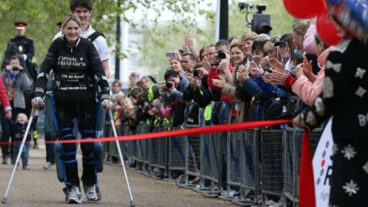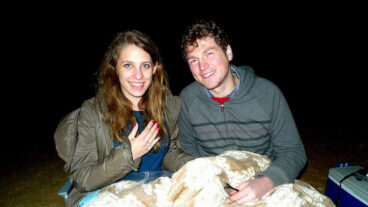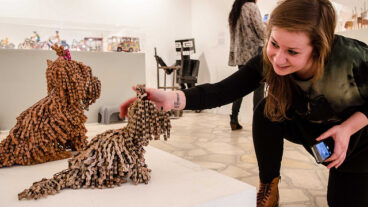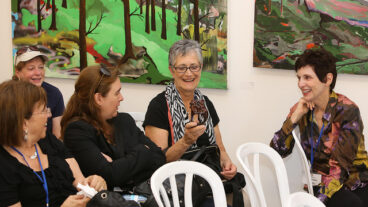As a team of rainmakers gathers in Israel’s Negev Desert, no West Texan is watching developments there more intently than John Grant, general manager of the Colorado River Municipal Water District.
A recent article in a science journal described how Israelis, Americans and Belgians are pushing the Geshem Project (named for the Hebrew word for rain) in hopes of alleviating world hunger.
The Negev, which receives no more than 6 inches of rain a year, is a harsh environment similar to West Texas’ Chihuahuan Desert. Scientists believe they can produce 27 inches of rain a year in Israel’s desert.
To extract moisture from cloudless skies, the researchers will alter air currents by using a plastic thermal material developed in Israel.
They will spread large sheets of black solar-absorbing film over perhaps 9 square miles of land to generate intense heat. How long the plastic sheeting will withstand the natural elements is not clear from the article.
Energy from sunlight, absorbed by the material, will radiate upward, heating the lower atmosphere.
Scientists hope the heated air will lift water condensation high enough to form clouds and produce rain.
“I’m always interested in looking at anything that will make it rain,” Grant told me by phone this week from his office in Big Spring. He added that the Negev project is all new to him.
The area between San Angelo and Del Rio is about 30 degrees north of the equator – virtually the same latitude as Israel’s Negev Desert. A major difference, however, is that West Texas has no major bodies of water within 100 miles – unlike the Negev’s nearby Mediterranean Sea.
“I guess the proof will be whether they can put it in and see what happens,” Grant said. He oversees cloud-seeding across a 1,000-square-mile area of Borden, Scurry, Mitchell and eastern Howard counties, north and northwest of San Angelo.
In the 1980s, then-Agriculture Commissioner Jim Hightower of Texas led a delegation of Texans to observe Israel’s advanced-drip irrigation systems, which established world standards for efficient use of scarce water.
“Israelis have been very aggressive in their water resources,” Grant said. “They’ve done a lot on demineralization, and in studying weather modification.”
The $97 million question is, how much moisture is in the air?
Near the equator, the sun heats air at the Earth’s surface, causing it to rise and flow toward the polar caps. That rising air carries water condensation that forms clouds at cool elevations.
Convection currents also affect trade winds.
Over areas such as West Texas and the Negev Desert, normal air currents prevent water vapor from rising high enough to form clouds.
Israel’s rainmakers say installing large black patches could raise the surface temperatures by 120 degrees, and thus create a chimney of fast-rising air currents. The artificial thermal would then lift the water vapor to about 10,000 feet elevation, where it can condense into water droplets that create clouds.
Clouds up to 20 miles long would form from noon to 5 p.m. daily above the black plastic, then drift with winds and shower nearby lands.
The cost of setting up the rainmaking experiment is estimated to be $2.5 million. A fully implemented system would approximate the cost of building a desalination plant – $97 million.
However, once in place, a desal plant requires a major investment to operate and maintain, as well as to dispose of extracted salt and minerals. The plastic material uses only free sunlight to operate and produces no waste.
If the rainmaking experiment works in Israel, sponsors hope to try it in northeastern Brazil, North Africa, and the Kalahari and Sahara deserts. In southeastern Spain, desertification is claiming large expanses of agricultural land – not unlike in the American Southwest.
Grant said he has seen other rainmaking ideas come and go.
“In the late 1990s, we had folks come over,” he recalled, noting the Russians were seriously pursuing weather modification. “They were saying they could shoot lasers up in the air and create clouds and make it rain.”
“Some folks approached us and said they could go to a big lake, like E.V. Spence Reservoir, and shoot sound waves across the lake and block the sun’s ultraviolet rays and reduce the evaporation.”
“There’s a lot of neat ideas out there,” he continued. “Let’s sit back and watch, and see how they get off the ground before you jump into anything.”
About the latest Israel experiment, Grant said, “I think it is something that ought to be watched. If it will rain, it will be worth every penny.”












